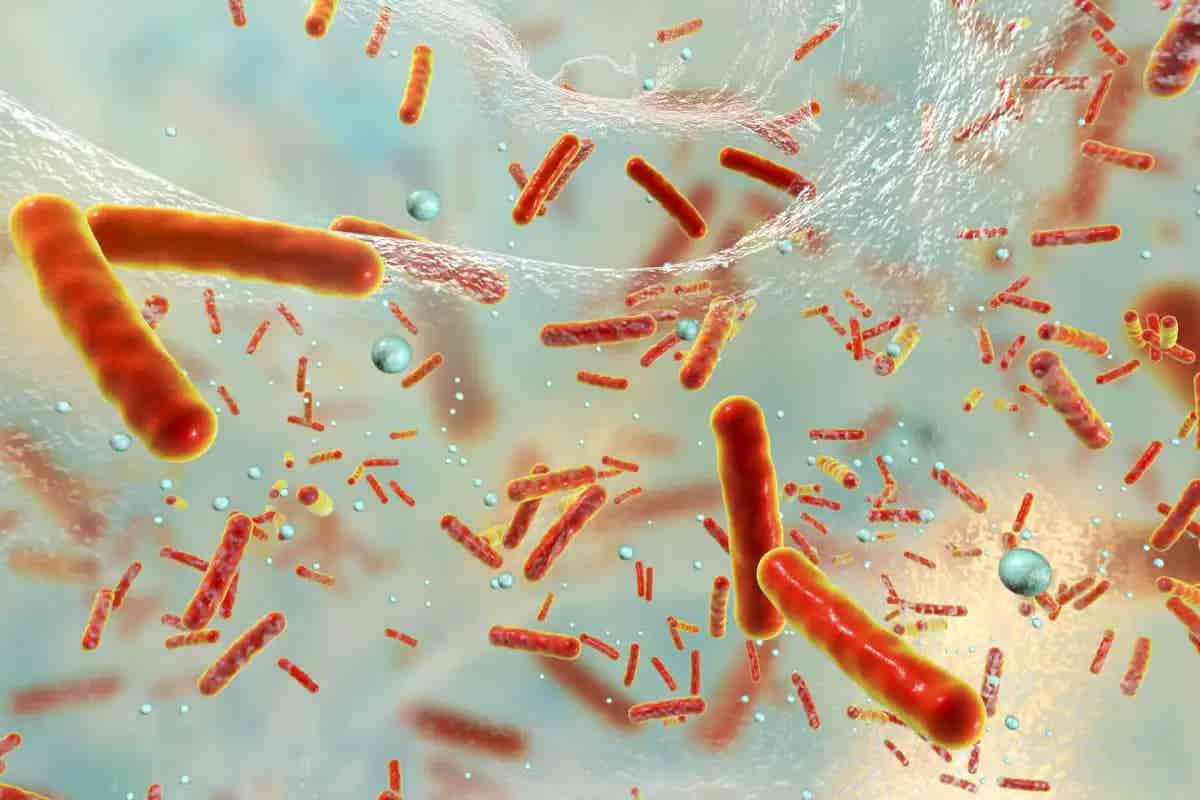Scientists discover natural antibiotics hidden within human proteins
Scientists found new antimicrobial peptides in human proteins that kill drug-resistant bacteria without harming healthy cells.

New research reveals hidden antimicrobial peptides in human proteins that target drug-resistant bacteria. (CREDIT: CC BY-SA 4.0)
Researchers have long known that glycosaminoglycan-binding proteins (HBPs) help control vital processes like cell growth, inflammation, and blood clotting. But a recent discovery has revealed a hidden ability in some of these proteins. Scientists have found that they also hold powerful antimicrobial potential—especially against dangerous, drug-resistant bacteria.
A team led by researchers at the Universitat Autònoma de Barcelona (UAB) has identified a new class of antimicrobial peptides (AMPs) hidden inside these human proteins. These peptides are particularly effective against Gram-negative bacteria, which are some of the toughest to treat with standard antibiotics. The findings, published in Molecular Systems Biology, open new possibilities for fighting hospital-acquired infections.
A Curious Similarity Between Molecules
The key to the discovery lies in the structural similarities between heparin—a molecule involved in human processes like blood clotting—and lipopolysaccharides (LPS), which coat the outer layer of harmful bacteria. Both contain negatively charged sugar chains. That shared feature allows them to bind in similar ways to HBPs.
Marc Torrent, a researcher at UAB’s Department of Biochemistry and Molecular Biology and the lead coordinator of the study, explains the idea that sparked their research: “Certain proteins of our bodies that bind to heparin, a molecule regulating processes such as blood clotting and inflammation, can also recognise similar structures found on the surface of dangerous bacteria.”
That observation set the research in motion. If HBPs could bind both heparin and bacterial surfaces, they might also have natural antibiotic properties.
The Search for Hidden Antimicrobials
To test their theory, the scientists used computer tools to examine more than 100 HBPs. They looked for specific protein regions known to bind heparin and identified areas likely to have antimicrobial activity. They found that 82% of the proteins analyzed contained regions with potential antimicrobial function, and most of those areas overlapped with heparin-binding sites.
Related Stories
One key pattern stood out. It was a structural motif known as the CPC’ clip. This motif forms a kind of “clip” that allows the protein to latch onto negatively charged molecules like heparin or LPS. The motif contains two positively charged amino acids—either arginine or lysine—and one polar amino acid such as asparagine, threonine, or tyrosine. Together, they form a configuration that can grip target molecules tightly.
The CPC’ clip isn’t new to science. It has appeared in earlier studies of proteins that bind heparin. But this research showed that it also plays a key role in bacterial targeting.
Five Peptides, One Clear Leader
To confirm their results, the team synthesized five peptides based on the identified binding regions. All five—named HBP-1 through HBP-5—were tested in the lab. Each one showed the ability to kill Gram-negative bacteria such as Escherichia coli, Pseudomonas aeruginosa, and Acinetobacter baumannii. These bacteria often cause severe infections in hospitals and have become resistant to many existing drugs.
Among the group, HBP-5 stood out. It had the highest binding strength to both heparin and LPS and showed powerful antimicrobial effects at very low, nanomolar concentrations. In a lab setting, HBP-5 not only killed bacteria but also showed low toxicity toward human cells, a sign of potential safety in future treatments.
Researchers went even further. In a sepsis model using infected mice, HBP-5 treatment led to a significant reduction in bacterial levels in multiple organs. The results suggest the peptide doesn’t just work in a petri dish—it may also help clear infections in living organisms.
“These peptides stand out for their potency and specificity, with a very low toxicity in human cells, indicating that they could be safe as a basis for future treatments,” says Torrent. “This opens the door to a new family of antibiotics derived from the body’s own proteins, with the advantage that they can act specifically against resistant bacteria without affecting healthy cells.”
Structural Clues and Broader Impact
The ability of HBPs to bind both heparin and LPS is more than a coincidence. Earlier studies showed that certain bacterial proteins, like the E. coli protein FhuA, also bind these kinds of molecules. FhuA, for instance, can bind antibiotics and components of bacterial cell walls. In one experiment, a short peptide derived from FhuA retained its ability to bind both LPS and heparin. But when the CPC’ clip motif was mutated, the peptide lost both binding functions. This showed just how essential that motif is.
Other work, like that of Heinzelmann and Bosshart, confirmed similar patterns in human lipopolysaccharide-binding proteins. These proteins not only recognize bacterial components but also boost immune responses. Their structure also includes the CPC’ motif, further supporting the idea that this clip-like shape is key to cross-functionality between human and bacterial systems.
The research suggests something deeper. There may be a biological overlap between how our bodies manage inflammation and how they respond to infection. Proteins that evolved to regulate blood flow and healing may also double as natural antibiotics. If that's true, the human body may hold more built-in defenses than previously realized.
A New Frontier in the Fight Against Superbugs
As drug resistance grows, especially among Gram-negative bacteria, the need for new antibiotics becomes more urgent. Traditional drugs often fail because these bacteria have a thick outer membrane that blocks entry. That’s why peptides like HBP-5 are so exciting. They latch onto this outer layer, bind strongly, and then disrupt the membrane to kill the bacteria.
HBPs offer a promising new source of AMPs. Because they already exist in the human body, treatments based on them could be less likely to cause side effects. They may also avoid triggering resistance as quickly as synthetic drugs often do.
The researchers believe this is just the beginning. More peptides with similar properties could be hiding in other human proteins. By using computational tools and structural biology, future studies may uncover a whole arsenal of natural antibiotics already coded into your own biology.
Note: The article above provided above by The Brighter Side of News.
Like these kind of feel good stories? Get The Brighter Side of News' newsletter.



